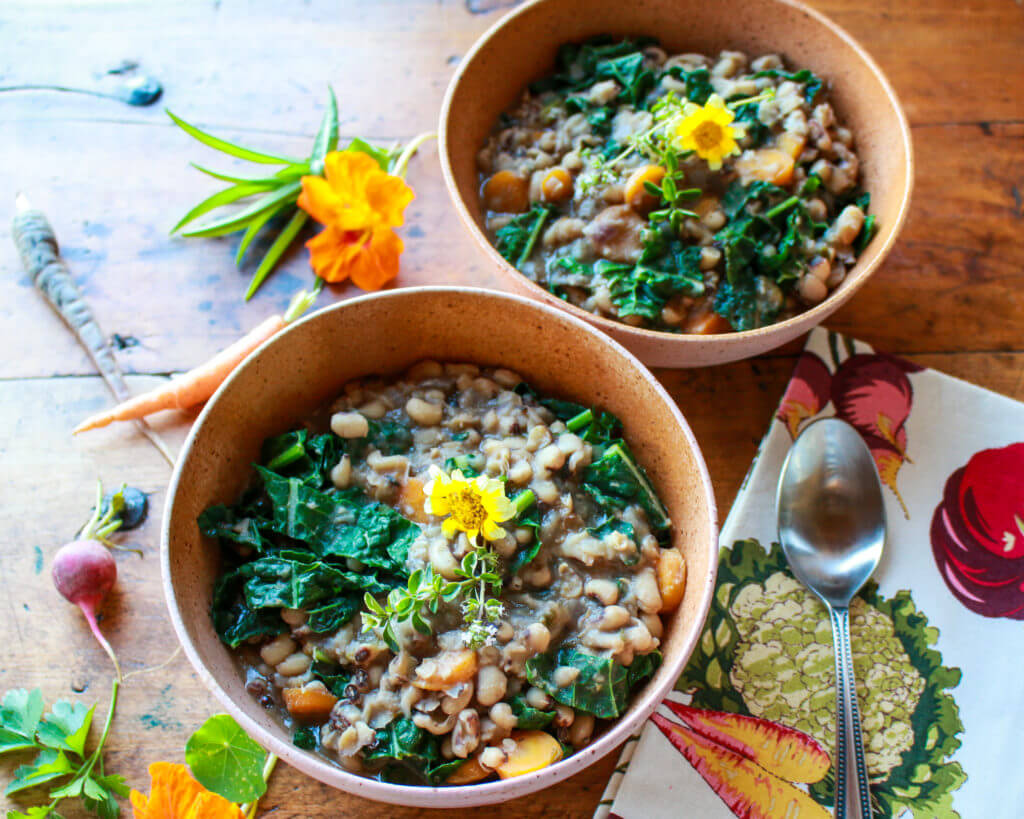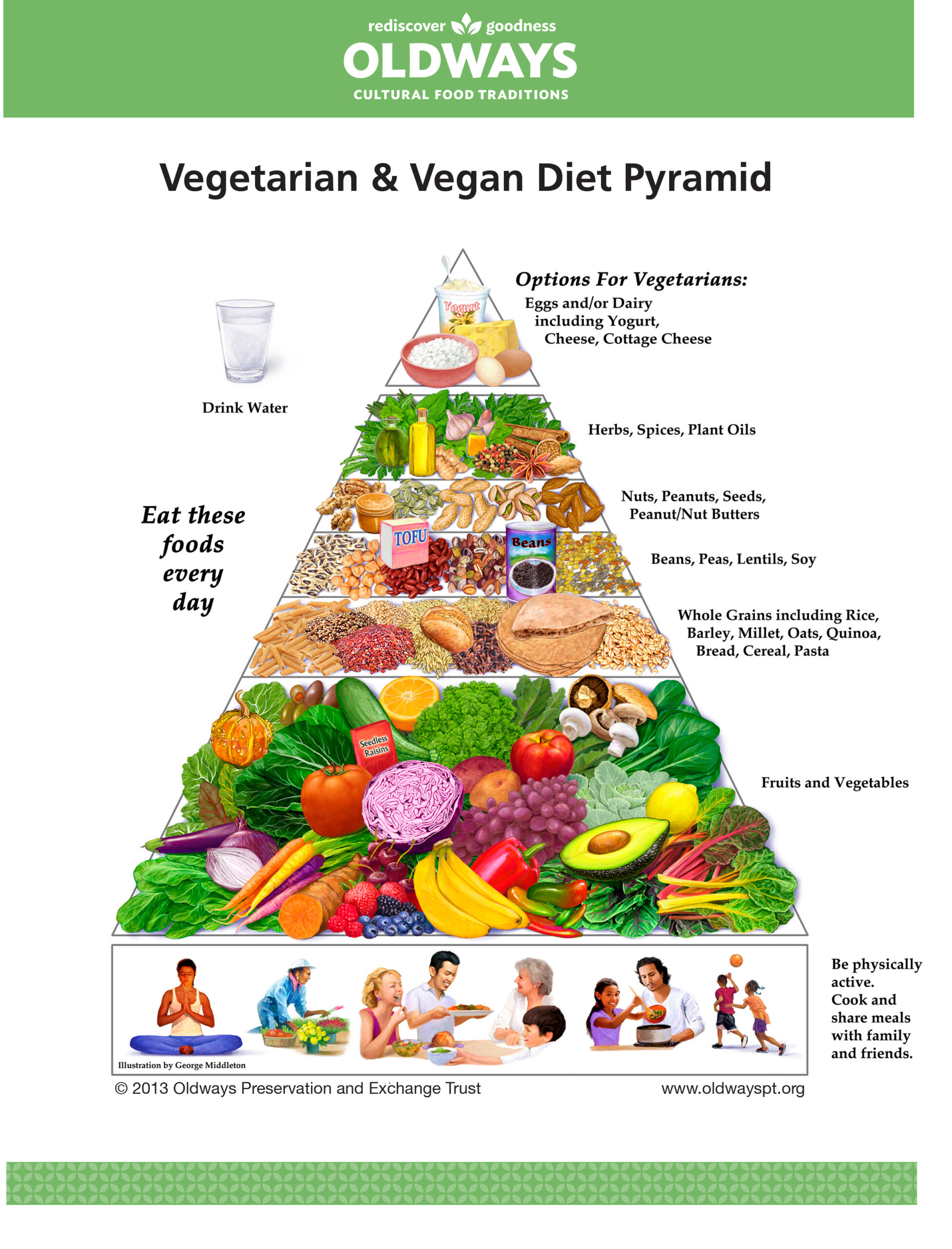9 Rules for a Healthy Vegan Diet

If you’re thinking about going vegan, and don’t know how to get started eating a plant-based diet, read on to learn more about the basic steps and rules for how to eat a healthy vegan diet.
Are you considering a vegan lifestyle? Wondering how to go vegan healthfully? Well, you are really not alone! Not so long ago, “going vegan” was considered a difficult path, filled with challenges and, to a certain extent, isolation. Today, being vegan is “cool,” thanks to celebrities like Alicia Silverstone, who wrote a bestselling book on the vegan diet called “The Kind Diet,” and Beyonce, who credits her plant-based diet to beaucoup benefits. Some surveys have found that 6% of Americans are now vegan, an increase of 600% in the last three years. Indeed, plant-based eating has been the trend of the decade and it keeps on growing. But just how do you kickstart a healthful vegan diet? I’ve got the answers in my blog, which includes my top 9 rules for how to eat a healthy vegan diet.

In Support of Plants.
In the past three decades, health experts are coming forward with oodles of scientific evidence promoting the benefits of diets that are based on plants, rather than animals. Results of an evidence-based scientific review shows that plant-based diets reduces the risk of ischemia, hypertension and type 2 diabetes; lowers LDL and blood pressure, reduces body mass, and reduces overall cancer rate. Risks of chronic disease are reduced due to decreased intake of saturated fat and cholesterol, and increased intake of vegetables with more fiber and phytochemicals, nuts, and soy proteins.
Vegan diets have also been linked to a lower environmental footprint. In fact, plant-based diets even got a plug in the Dietary Guidelines (U.S. Department of Agriculture), which include vegetarian eating patterns, including vegan diets, as one of three healthy eating plans you should consider trying.

Adequate Nutrition
If you’ve decided to take on a vegan lifestyle, whether for health or philosophical reasons, it’s important to put a little thought and planning into your new strategy for eating. While it’s getting easier to find vegan products on supermarket shelves, it’s important to ensure that you get a balanced diet that meets all of your nutritional needs. Check out these Nine Vegan Diet Rules to make sure you make the most of your plant-based diet.
9 Vegan Diet Rules
If you’ve chosen to go vegan, follow these top rules to make sure your diet is complete.

1. Protein perspective. It’s a common misperception that it’s impossible to get adequate protein on a vegan diet. Keep in mind that nearly all foods contain some protein, except for alcohol, sugar and fat. If you eat a balanced diet with many plant foods and grains, you’re already getting good sources of protein. To ensure that you’re meeting your protein needs, shoot for two servings of nuts and seeds like walnuts, peanuts, and sunflower seeds, and three servings of legumes and soy such as beans, lentils, peas and tofu, every day.
2. Vitamin D-fense. It’s a challenge for vegans, as well as omnivores, to get adequate levels of the important nutrient vitamin D. That’s why you should try to get 10 minutes of sunlight a day, consume vitamin-D fortified foods such as soy or rice milk, breakfast cereal, or orange juice; or take a vitamin D supplement.

3. Calcium counts. Even if you forfeit meat and dairy products, your body still needs calcium. Focus on calcium-fortified products like juices and soymilk, and calcium-rich foods like dark green vegetables, almonds, and broccoli; and consider taking a calcium supplement.
4. Vitamin B12 boost. This vitamin, found in animal products, is essential. So you need to either consume vitamin B12-fortified foods or take a supplement to meet your needs.

5. Pump iron. You don’t need animal products to get iron. Make sure you include plant iron sources like spinach, kidney beans, lentils and whole wheat bread in your diet, and add a vitamin C source to increase your absorption of iron.

6. Find zinc. You can easily meet your zinc needs, as long as you include whole grains, legumes, green vegetables, and nuts in your diet.
7. Omega-3 bonus. Get your heart- and brain-healthy omega-3s by eating about two servings a day of foods rich in plant omega-3s, such as walnuts, canola oil, soy products, and hemp. You can also consider taking an algae supplement, which is where fish get their omegas to begin with.

8. Make your calories count. When you’re eating vegan, you need to make sure your food choices really count so that you meet all of your protein, vitamin and mineral needs. Instead of falling for vegan “junk foods,” available in grocery stores that supply mostly refined grains and sugars, keep your diet primarily whole foods. Seek a variety of natural plant foods such as fruits, vegetables, whole grains, nuts and seeds. And don’t forget to change it up; by varying the types of plant foods you eat every day you will ensure a diverse supply of important nutrients.

9. The Vegetarian & Vegan Food Pyramid. Make planning easier by downloading The Oldways Vegetarian & Vegan Food Pyramid (which I helped create!) here, and posting it on your refrigerator—it will make planning a cinch.
Image: Harvest Grain Bowl from California Vegan
For other information on planning a healthy vegan diet, check out these blogs:
How to Get Vitamin B12 on a Vegan Diet
How to Power Up on Plant Proteins
Meeting Your Nutrient Needs on a Vegan Diet


